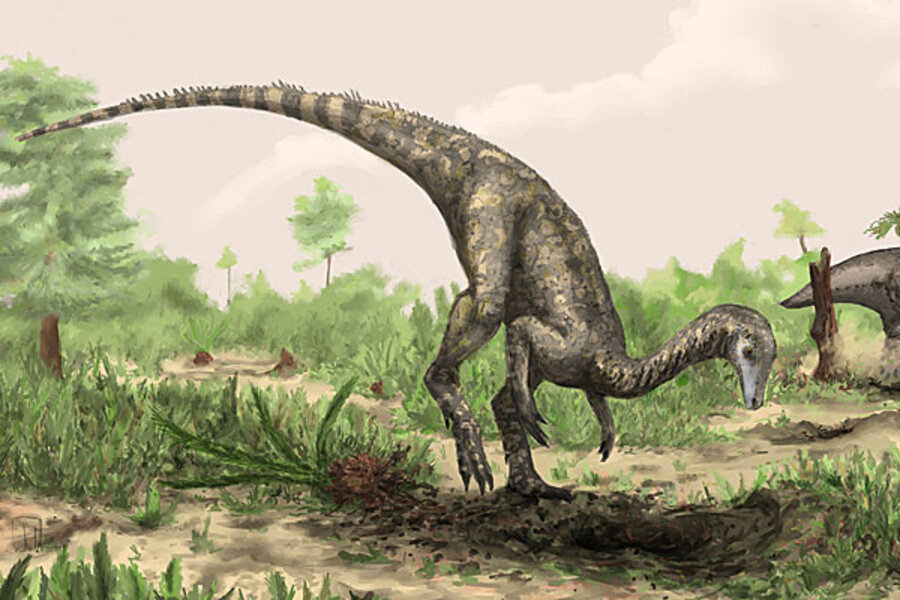World's oldest dinosaur discovered hanging out in London museum
Loading...
| London
Researchers have found what could be the earliest known dinosaur to walk the Earth lurking in the corridors of London's Natural History Museum.
A mysterious fossil specimen that has been in the museum's collection for decades has now been identified as most likely coming from a dinosaur that lived about 245 million years ago - 10 to 15 million years earlier than any previously discovered examples.
The creature was about the size of a Labrador dog and has been named Nyasasaurus parringtoni after southern Africa's Lake Nyasa, today called Lake Malawi, and Cambridge University's Rex Parrington, who collected the specimen at a site near the lake in the 1930s.
"It was a case of looking at the material with a fresh pair of eyes," Paul Barrett from the Natural History Museum, who worked on the study, told Reuters. "This closes a gap in the fossil record and pushes back the existence of dinosaurs."
The London fossil was studied by researchers in the 1950s but no conclusion was reached and nothing was published, said Barrett. "It was a mystery what it was ... It just became this mythical animal."
Two features of the London fossil, together with a similar sample subsequently spotted at the Iziko South African Museum in Cape Town, are strong evidence that the animal belongs with the dinosaurs, the researchers said.
The bone tissues in the upper arm show marks of rapid growth, common in dinosaurs, and they also have a feature known as an elongated deltopectoral crest that anchored the upper arm muscles, a feature unique to dinosaurs.
"Although we only know Nyasasaurus from fossil fragments, the anatomy of its upper arm bone and hips have features that are unique to dinosaurs, making us confident that we're dealing with an animal very close to dinosaur origin," said Barrett.
The researchers believe Nyasasaurus probably stood upright, was a meter tall at the hip, 2-3 meters long from head to tail, and weighed 20-60 kg (44-132 lbs).
When it was alive, the world's continents were joined in a vast landmass called Pangaea, and the area of Tanzania where the fossils were found would have been part of the southern Pangaea that included Africa, South America, Antarctica and Australia.
Theorists have long argued there should have been dinosaurs walking the Earth in the Middle Triassic period, which ended about 237 million years ago, but until now the evidence has been ambiguous, said Sterling Nesbitt at the University of Washington in Seattle who led the study, published in the journal Biology Letters.
"If the newly named Nyasasaurus parringtoni is not the earliest dinosaur, then it is the closest relative found so far," said Nesbitt.
"What's really neat about this specimen is that it has a lot of history. Found in the '30s, first described in the 1950s ... Now 80 years later, we're putting it all together."
The researchers plan further field work in Tanzania to find more fossils and build a better picture of the animal's anatomy. (Editing by Pravin Char)







